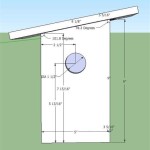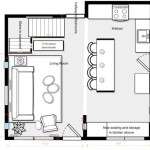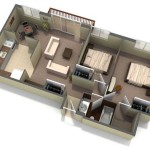House Plans and Floor Plans: A Comprehensive Guide
Building a new home or renovating an existing one is a significant undertaking. Crucial to this process are house plans and floor plans, which serve as the blueprints for the entire project. Understanding the difference between these two and their various components is essential for effective communication with architects, builders, and other professionals involved in the construction process.
A house plan is a comprehensive set of drawings that detail every aspect of a house's construction. These plans provide a complete picture of the structure, including its exterior elevations, roof design, foundation layout, framing details, electrical and plumbing schematics, and, importantly, the floor plans. They are used by builders and contractors to understand the project's scope and execute the construction according to the design specifications. House plans are legal documents required for obtaining building permits and ensuring the structure adheres to local building codes.
Floor plans, on the other hand, are a specific type of drawing within the larger set of house plans. They represent a horizontal, overhead view of a building's layout on a specific floor. Imagine slicing through a building horizontally and looking down at the resulting cross-section – that's essentially what a floor plan depicts. These plans show the arrangement of rooms, walls, doors, windows, stairs, and other architectural features within a given floor. Floor plans are essential for visualizing the flow and functionality of the living space.
Several key elements are incorporated into a well-designed floor plan. Walls are represented by lines, with thicker lines typically denoting exterior walls. Doors are depicted as openings in the walls, often with an arc to indicate the direction of swing. Windows are similarly represented, often with multiple lines to indicate panes. Room dimensions are usually marked clearly on the plan, allowing for accurate space planning. Furthermore, floor plans may include symbols to represent appliances, fixtures, and furniture, providing a more complete visualization of the finished space.
Different types of floor plans cater to various needs and stages of the building process. A basic floor plan shows the fundamental layout of a floor, primarily focusing on the arrangement of rooms and walls. A detailed floor plan goes further, including specific dimensions, locations of fixtures and appliances, and other critical details. A furniture floor plan incorporates furniture layouts, helping homeowners visualize how their furniture will fit within the space. Finally, 3D floor plans offer a more immersive experience, allowing for a virtual walkthrough of the space.
When reviewing or selecting house plans and floor plans, several important considerations should be kept in mind. The size and layout of the house should align with the lifestyle and needs of the occupants. The number of bedrooms, bathrooms, and other functional spaces should be carefully considered. The flow of the house, or how easily one can move between different areas, is another crucial factor. Natural light and ventilation are also important aspects to consider, as they contribute significantly to the comfort and energy efficiency of the home. Finally, the orientation of the house on the site and its relationship to the surrounding environment should be evaluated.
The availability of house plans and floor plans has been revolutionized by the internet. Numerous online resources offer pre-designed plans for purchase or customization. These resources often provide tools for modifying existing plans or even creating custom designs from scratch. Working with an architect or building designer remains a valuable option, especially for complex projects or when highly specific requirements need to be met. These professionals can develop custom plans tailored to individual needs and site conditions.
Understanding local building codes and regulations is paramount when working with house plans and floor plans. Building codes dictate specific requirements for various aspects of construction, including structural integrity, fire safety, accessibility, and energy efficiency. Obtaining the necessary permits and approvals is essential before commencing any construction work. Non-compliance with building codes can result in fines, delays, and even legal action.
The cost of house plans and floor plans can vary significantly based on several factors. The complexity of the design, the size of the house, and the level of detail required all influence the overall cost. Pre-designed plans are generally more affordable than custom-designed options. Working with an architect or building designer typically involves a higher investment but offers the benefit of personalized service and expertise.
House plans and floor plans are indispensable tools in the process of building or renovating a home. They provide a visual representation of the project, facilitating communication between all stakeholders. Careful consideration of the various elements and types of these plans, coupled with an understanding of local regulations and budget constraints, will contribute to a successful and satisfying building experience.

House Plans How To Design Your Home Plan

House Plans How To Design Your Home Plan

Top Tips For Choosing A Floor Plan Your New Home

Peach Tree House Plan Ranch Floor Designs

Small House Plan Ideas For Diffe Area To See More Read It Floor Plans

House Plans Nearly 200 To Choose From Generation Homes

How To Read A Floor Plan With Dimensions Houseplans Blog Com

House Plans Floor Blueprints

House Plans How To Design Your Home Plan

House Plans The Best Floor Home Designs Abhp








